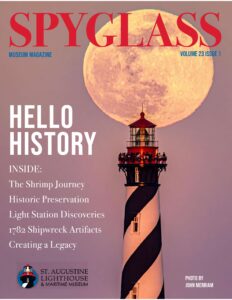SHRIMP
Small Crustacean, Big Journey
Biting into a crispy shrimp dipped in some tangy cocktail sauce is one of the most popular experiences to enjoy in our city!
Shrimp have been a staple of St. Augustine seafood prior to World War II thanks to the ingenuity of one local resident. Sollecito “Mike” Salvador brought the fledgling shrimping industry to St. Augustine in the early 1900s. With the help of his family, Mike built shrimping from a little-known seafood into a household meal. Getting freshly caught seafood into America’s kitchens was no easy task. As demand increased, Mike relied heavily upon his local contacts and expanded into additional markets.
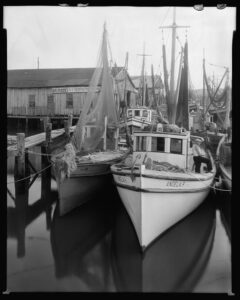
Shrimp boats docked in St. Augustine in 1936 or 1937. Mike Salvador’s seafood packing building marked by a sign is in the background. That sign is part of the Museum’s collection and appears on site. Photo courtesy of Carnegie Survey of the Architecture of the South, Library of Congress, Prints and Photographs Division
During World War II, soldiers from across the country came to St. Augustine to train for the European and Japanese fronts. Florida hotels that had previously welcomed tourists turned into training centers for the different branches of the military. In turn, these same soldiers tasted local cuisine in St. Augustine restaurants that included shrimp on the menu. When the soldiers returned home, their desire for shrimp helped to push the demand even higher.
After the war, American housewives popularized shrimp, and seafood markets began selling shrimp in ever increasing numbers. Families looking for a break from the usual pot roast or chicken found shrimp a delicacy and tasty to eat. Upscale restaurants seeking to impress diners began featuring the Shrimp Cocktail as a high-end appetizer. Housewives discovered frozen shrimp in the frozen food section of their local grocery stores. Nationwide, shrimp became more and more common as restaurants added shrimp to their menus.
Florida’s shrimping industry answered the ever-increasing demand across the country.
Shrimpers continued to supply America’s appetite for shrimp. The state government promoted the industry with recipe cards and advertisements encouraging women to cook with shrimp. One campaign included Florida’s First Lady, Mrs. LeRoy Collins sitting in the kitchen of her home with a plate of shrimp on the counter. One might conclude that if shrimp is good enough for the Governor of Florida, surely it is good enough for your family!
Shrimp is now entrenched in our popular culture. As Bubba Blue said in Forrest Gump, “Anyway, like I was sayin’, shrimp is the fruit of the sea. You can barbecue it, boil it, broil it, bake it, sauté it. Dey’s uh, shrimp-kabobs, shrimp creole, shrimp gumbo. Pan fried, deep fried, stir-fried. There’s pineapple shrimp, lemon shrimp, coconut shrimp, pepper shrimp, shrimp soup, shrimp stew, shrimp salad, shrimp and potatoes, shrimp burger, shrimp sandwich. That-that’s about it.”
Next time you sit down to enjoy your shrimp, think about the journey that little guy has made!
The Shrimpin’ Ain’t Easy exhibit is located in the Keepers’ House at the St. Augustine Lighthouse & Maritime Museum.
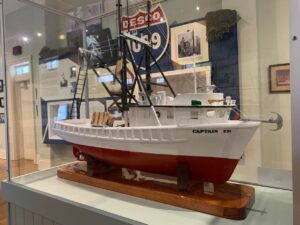
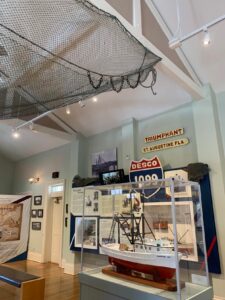
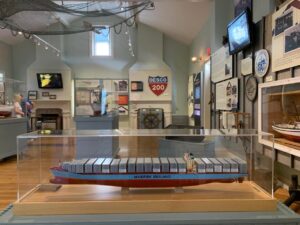
Check out More Behind the Scenes of
The St. Augustine Lighthouse & Maritime Museum
SPYGLASS MAGAZINE


